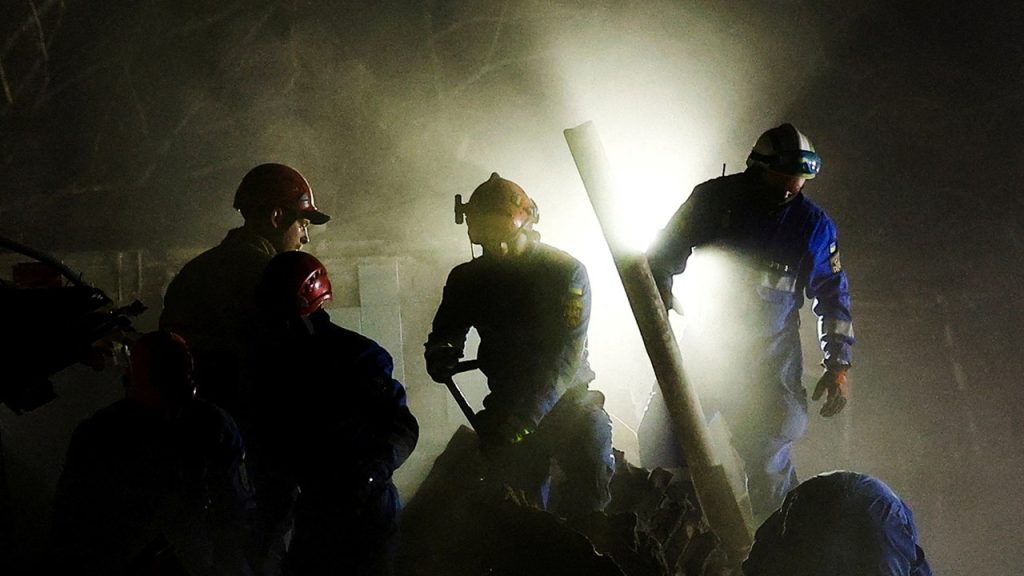U.S. officials are preparing to impose new economic sanctions on Russia as part of a strategy to increase pressure on Moscow regarding its ongoing conflict in Ukraine. These sanctions will target key entities in Russia’s banking and energy sectors, including the prominent state-owned energy company Gazprom. However, uncertainty looms over whether President Donald Trump will approve these measures, as his administration has been navigating a complex relationship with Moscow amid calls for a ceasefire and peace negotiations.
| Article Subheadings |
|---|
| 1) Overview of Sanctions Targeting Russia |
| 2) President Trump’s Position on Sanctions |
| 3) The Context of Russia’s Invasion of Ukraine |
| 4) Economic Impacts of Previous Sanctions |
| 5) Future Considerations for U.S.-Russia Relations |
Overview of Sanctions Targeting Russia
In a bid to heighten pressure on Russia amid its prolonged conflict with Ukraine, U.S. officials have finalized a new set of economic sanctions. These sanctions focus on critical sectors such as banking and energy, which play a significant role in Russia’s economy. Among the primary targets is Gazprom, the state-owned energy giant, which is pivotal in supplying fuel not only to Russia but also to various European nations. The decision to impose these sanctions signifies an escalation in West’s approach to counter Russia’s actions in Ukraine, particularly as the crisis shows no signs of resolution.
President Trump’s Position on Sanctions
The role of President Donald Trump in the sanction approval process remains uncertain. While reports indicate that the National Security Council is advocating for tougher measures against Moscow, Trump’s personal stance is under scrutiny. His past expressions of admiration for Russian President Vladimir Putin complicate the narrative, creating doubt about his willingness to implement strict sanctions. Officials have noted that any final decision on the sanctions package will need Trump’s explicit approval, leaving many to wonder how his softening attitude towards Moscow—contrasted by recent frustrations—will influence the outcome.
The Context of Russia’s Invasion of Ukraine
The backdrop to these proposed sanctions is Russia’s ongoing invasion of Ukraine, which began in earnest in 2022. Since the onset of hostilities, the United States and its allies have systematically layered sanctions aimed at crippling the Russian economy and curtailing its military funding. These efforts have historically targeted sectors including energy, finance, and several other industries crucial to Russian economic stability. The conflict’s intensity has led to widespread international condemnation of Russia’s actions, sparking a unified Western response that seeks to bring about a peaceful resolution.
Economic Impacts of Previous Sanctions
Despite the extensive sanctions already imposed, Russia has proven adept at navigating these economic barriers. Traditional pathways for economic activity have been challenged, yet Russia continues to secure funding, particularly through lucrative oil and gas deals with countries like India and China. These nations have bridged the gap for Russia, allowing it to maintain a semblance of economic normalcy amidst significant international pressure. Observers have opined that introducing secondary sanctions—designed to penalize countries that still engage in commerce with Russia—could markedly change the landscape and ensure that Moscow feels the financial pinch more acutely.
Future Considerations for U.S.-Russia Relations
The road ahead for U.S.-Russia relations remains fraught with tension and ambiguity. As both parties continue to maneuver within a charged geopolitical atmosphere, the upcoming sanctions and their potential implementation by Trump will serve as a critical test. Trump’s efforts to mediate a ceasefire have been met with repeated dismissals from Putin, raising questions about the longevity and effectiveness of diplomatic relations. Analysts underscore that the U.S.’s stance on sanctions may very well define future engagements between the two nations and the possibilities for achieving a sustainable peace in Ukraine.
| No. | Key Points |
|---|---|
| 1 | New sanctions targeting Russia focus on the banking and energy sectors. |
| 2 | President Trump’s approval remains uncertain amidst a complex relationship with Moscow. |
| 3 | Past sanctions have had limited success in curtailing Russia’s military funding. |
| 4 | Russia continues to generate revenue through oil and gas sales to other nations. |
| 5 | The potential for future U.S.-Russia relations depends on the effectiveness of these sanctions. |
Summary
The prospect of new economic sanctions against Russia represents a pivotal development in the ongoing geopolitical struggle surrounding the invasion of Ukraine. With critical targets like Gazprom in the crosshairs, the effectiveness of these sanctions will largely depend on President Trump’s approval and strategic decisions moving forward. As Russia maneuvers through its economic challenges, the broader implications for U.S.-Russia relations and the search for peace will be closely monitored by international observers.
Frequently Asked Questions
Question: What are the main targets of the new sanctions against Russia?
The new sanctions mainly target Russia’s banking and energy sectors, particularly focusing on the state-owned entity Gazprom.
Question: Why is President Trump’s approval significant for the sanctions?
Trump’s approval is crucial as the final decision on implementing the sanctions lies with him, raising questions about how his fluctuating stance towards Russia may influence the measure.
Question: How have previous sanctions affected Russia’s economy?
While previous sanctions have been substantial, Russia has managed to circumvent many of these restrictions, particularly through trade relations with countries like India and China, allowing it to continue financing its military operations.


